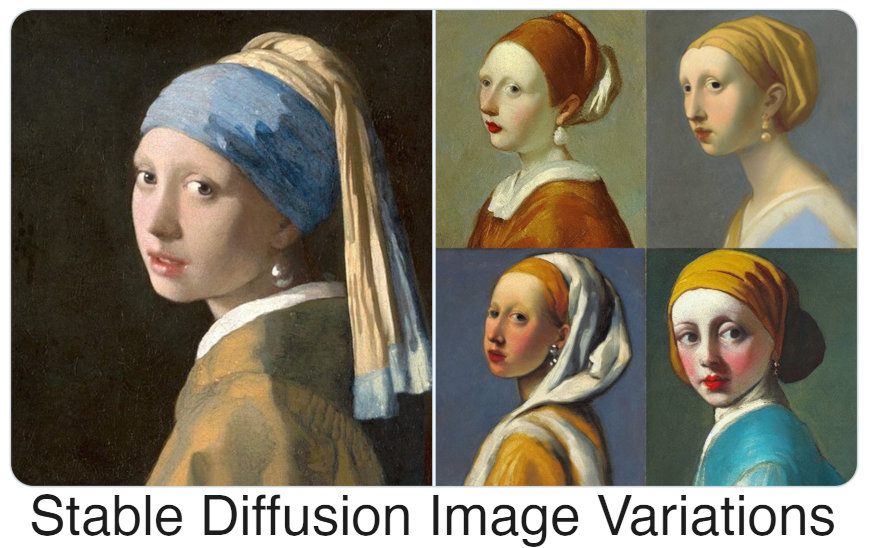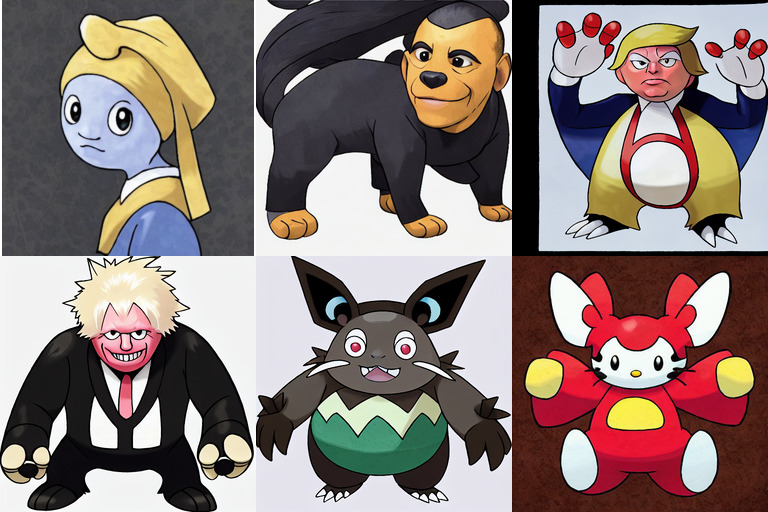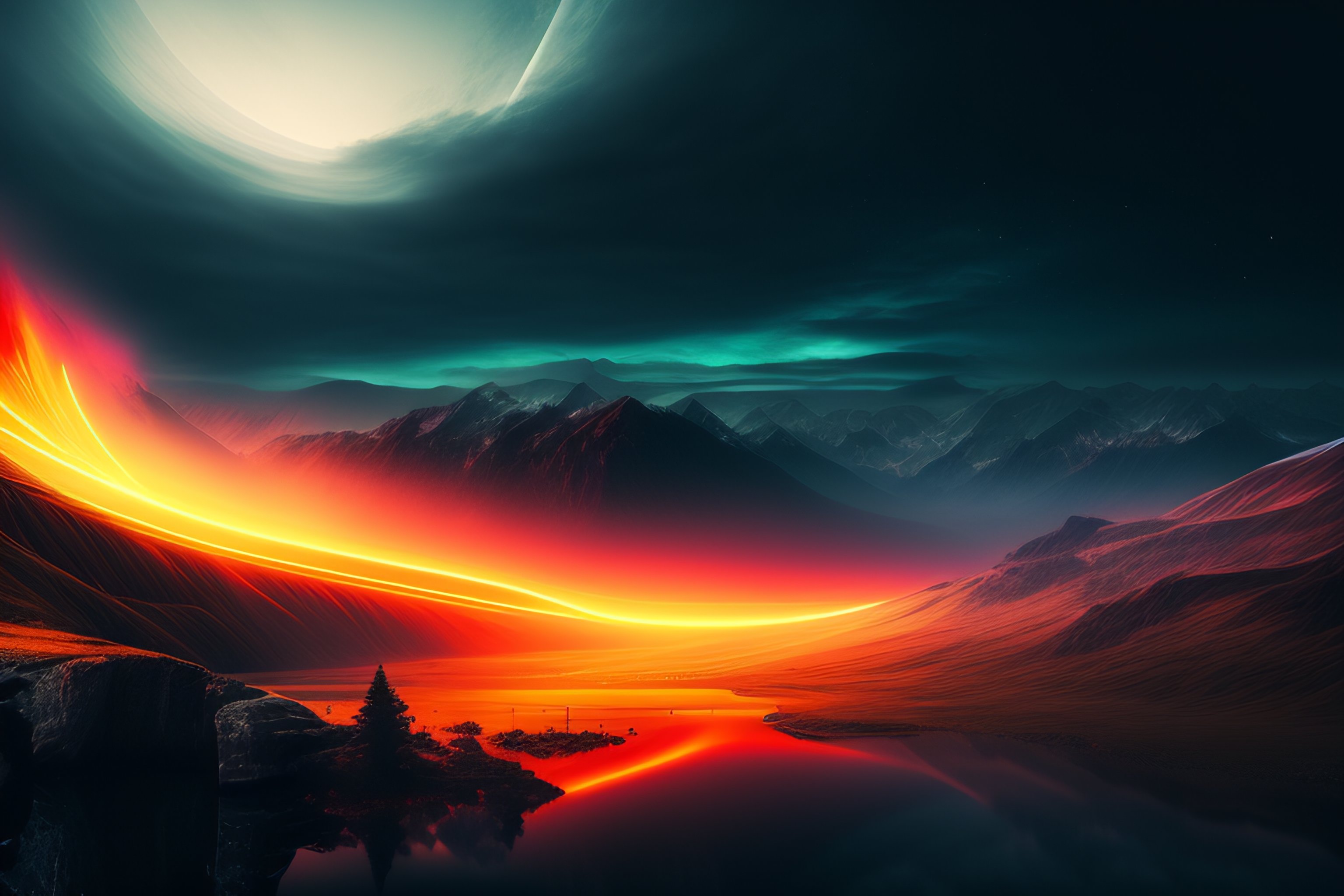image-mixer
Maintainer: lambdal

8

| Property | Value |
|---|---|
| Model Link | View on Replicate |
| API Spec | View on Replicate |
| Github Link | View on Github |
| Paper Link | No paper link provided |
Get summaries of the top AI models delivered straight to your inbox:
Model overview
The image-mixer model, created by lambdal, allows users to blend and mix two input images using Stable Diffusion. This model is similar to other Stable Diffusion-based models like stable-diffusion-inpainting, masactrl-stable-diffusion-v1-4, realisticoutpainter, ssd-1b-img2img, and stable-diffusion-x4-upscaler, which offer various image editing and generation capabilities.
Model inputs and outputs
The image-mixer model takes two input images, along with various parameters to control the mixing and generation process. The output is an array of generated images that blend the two input images.
Inputs
- image1: The first input image
- image2: The second input image
- image1_strength: The mixing strength of the first image
- image2_strength: The mixing strength of the second image
- num_steps: The number of iterations for the generation process
- cfg_scale: The Classifier-Free Guidance Scale, which controls the balance between image fidelity and creativity
- num_samples: The number of output images to generate
Outputs
- An array of generated images that blend the two input images
Capabilities
The image-mixer model can be used to create unique and visually striking images by blending two input images. This can be useful for a variety of applications, such as:
- Generating artistic and surreal-looking images
- Experimenting with different image combinations and styles
- Creating unique background images or textures for digital art or design projects
What can I use it for?
The image-mixer model can be used in a variety of creative projects, such as:
- Generating unique artwork or digital illustrations
- Experimenting with different image blending techniques
- Creating custom backgrounds or textures for graphic design or web development
- Exploring the possibilities of AI-generated imagery
Things to try
One interesting thing to try with the image-mixer model is to experiment with different input image combinations and parameter settings. Try using a range of different image types, from photographs to digital artwork, and see how the model blends them together. You can also play with the mixing strength and number of steps to create more abstract or realistic-looking outputs.
This summary was produced with help from an AI and may contain inaccuracies - check out the links to read the original source documents!
Related Models

stable-diffusion-image-variation

236
stable-diffusion-image-variation is a fine-tuned version of the Stable Diffusion model created by Lambda Labs. This model is conditioned on CLIP image embeddings, enabling it to generate image variations based on an input image. This is in contrast to the original Stable Diffusion model, which generates images from text prompts. The stable-diffusion-image-variation model can be used to create stylized or altered versions of an existing image. Model inputs and outputs The stable-diffusion-image-variation model takes an input image and parameters such as guidance scale and number of inference steps to control the generation process. It outputs a set of new images that are variations on the input. Inputs Input Image**: The image to generate variations from Guidance Scale**: A scaling factor that controls the strength of the CLIP image guidance Num Inference Steps**: The number of denoising steps to perform during generation Outputs Output Images**: A set of generated image variations based on the input Capabilities The stable-diffusion-image-variation model can be used to create unique and creative image variations from a starting point. This can be useful for tasks like image editing, artistic exploration, and content generation. The model is able to generate a diverse range of outputs while maintaining the overall structure and content of the input image. What can I use it for? The stable-diffusion-image-variation model can be used for a variety of creative and practical applications. For example, you could use it to generate concept art, design assets, or experiment with different artistic styles. The model's ability to produce unique variations on an input image makes it well-suited for tasks like product visualization, fashion design, and visual effects. Things to try One interesting thing to try with the stable-diffusion-image-variation model is to provide it with a range of diverse input images and see how it generates variations. This can lead to unexpected and serendipitous results, as the model may combine elements from the input images in novel ways. You could also experiment with adjusting the guidance scale and number of inference steps to see how they affect the output.
Updated Invalid Date

stable-diffusion

107.9K
Stable Diffusion is a latent text-to-image diffusion model capable of generating photo-realistic images given any text input. Developed by Stability AI, it is an impressive AI model that can create stunning visuals from simple text prompts. The model has several versions, with each newer version being trained for longer and producing higher-quality images than the previous ones. The main advantage of Stable Diffusion is its ability to generate highly detailed and realistic images from a wide range of textual descriptions. This makes it a powerful tool for creative applications, allowing users to visualize their ideas and concepts in a photorealistic way. The model has been trained on a large and diverse dataset, enabling it to handle a broad spectrum of subjects and styles. Model inputs and outputs Inputs Prompt**: The text prompt that describes the desired image. This can be a simple description or a more detailed, creative prompt. Seed**: An optional random seed value to control the randomness of the image generation process. Width and Height**: The desired dimensions of the generated image, which must be multiples of 64. Scheduler**: The algorithm used to generate the image, with options like DPMSolverMultistep. Num Outputs**: The number of images to generate (up to 4). Guidance Scale**: The scale for classifier-free guidance, which controls the trade-off between image quality and faithfulness to the input prompt. Negative Prompt**: Text that specifies things the model should avoid including in the generated image. Num Inference Steps**: The number of denoising steps to perform during the image generation process. Outputs Array of image URLs**: The generated images are returned as an array of URLs pointing to the created images. Capabilities Stable Diffusion is capable of generating a wide variety of photorealistic images from text prompts. It can create images of people, animals, landscapes, architecture, and more, with a high level of detail and accuracy. The model is particularly skilled at rendering complex scenes and capturing the essence of the input prompt. One of the key strengths of Stable Diffusion is its ability to handle diverse prompts, from simple descriptions to more creative and imaginative ideas. The model can generate images of fantastical creatures, surreal landscapes, and even abstract concepts with impressive results. What can I use it for? Stable Diffusion can be used for a variety of creative applications, such as: Visualizing ideas and concepts for art, design, or storytelling Generating images for use in marketing, advertising, or social media Aiding in the development of games, movies, or other visual media Exploring and experimenting with new ideas and artistic styles The model's versatility and high-quality output make it a valuable tool for anyone looking to bring their ideas to life through visual art. By combining the power of AI with human creativity, Stable Diffusion opens up new possibilities for visual expression and innovation. Things to try One interesting aspect of Stable Diffusion is its ability to generate images with a high level of detail and realism. Users can experiment with prompts that combine specific elements, such as "a steam-powered robot exploring a lush, alien jungle," to see how the model handles complex and imaginative scenes. Additionally, the model's support for different image sizes and resolutions allows users to explore the limits of its capabilities. By generating images at various scales, users can see how the model handles the level of detail and complexity required for different use cases, such as high-resolution artwork or smaller social media graphics. Overall, Stable Diffusion is a powerful and versatile AI model that offers endless possibilities for creative expression and exploration. By experimenting with different prompts, settings, and output formats, users can unlock the full potential of this cutting-edge text-to-image technology.
Updated Invalid Date

text-to-pokemon

7.8K
The text-to-pokemon model, created by Lambda Labs, is a Stable Diffusion-based AI model that can generate Pokémon characters from text prompts. This model builds upon the capabilities of the Stable Diffusion model, which is a latent text-to-image diffusion model capable of generating photo-realistic images from any text input. The text-to-pokemon model has been fine-tuned on a dataset of BLIP captioned Pokémon images, allowing it to generate unique Pokémon creatures based on text prompts. This is similar to other Stable Diffusion variants, such as the sd-pokemon-diffusers and pokemon-stable-diffusion models, which also focus on generating Pokémon-themed images. Model inputs and outputs Inputs Prompt**: A text description of the Pokémon character you would like to generate. Seed**: An optional integer value to set the random seed, allowing you to reproduce the same generated image. Guidance Scale**: A value that controls the influence of the text prompt on the generated image, with higher values leading to outputs that more closely match the prompt. Num Inference Steps**: The number of denoising steps to perform during the image generation process. Num Outputs**: The number of Pokémon images to generate based on the provided prompt. Outputs Images**: The generated Pokémon images, returned as a list of image URLs. Capabilities The text-to-pokemon model can generate a wide variety of unique Pokémon creatures based on text prompts, ranging from descriptions of existing Pokémon species to completely novel creatures. The model is capable of capturing the distinct visual characteristics and features of Pokémon, such as their body shapes, coloration, and distinctive features like wings, tails, or other appendages. What can I use it for? The text-to-pokemon model can be used to create custom Pokémon art and content for a variety of applications, such as: Generating unique Pokémon characters for use in fan art, stories, or games Exploring creative and imaginative Pokémon designs and concepts Developing Pokémon-themed assets for use in web content, mobile apps, or other digital media Things to try Some interesting prompts to try with the text-to-pokemon model include: Describing a Pokémon with a unique type or elemental affinity, such as a "fire and ice type dragon Pokémon" Combining different Pokémon features or characteristics, like a "Pokémon that is part cat, part bird, and part robot" Generating Pokémon based on real-world animals or mythological creatures, such as a "majestic unicorn Pokémon" or a "Pokémon based on a giant panda" Experimenting with the guidance scale and number of inference steps can also produce a range of different results, from more realistic to more abstract or stylized Pokémon designs.
Updated Invalid Date

stable-diffusion-upscaler

3
stable-diffusion-upscaler is an AI model developed by Replicate creator jagilley that can upscale images using the Stable Diffusion model. This model builds upon the capabilities of the Stable Diffusion model, which can generate photo-realistic images from text prompts. The stable-diffusion-upscaler model can take an existing image and intelligently upscale it, increasing the resolution and detail while preserving the original content. Model inputs and outputs The stable-diffusion-upscaler model takes a variety of inputs that allow users to customize the upscaling process. These include the image to be upscaled, a scaling factor, the number of sampling steps, and optional prompts to guide the upscaling. The model then outputs an upscaled version of the input image. Inputs image**: The image to be upscaled scale**: The factor by which to scale the image steps**: The number of steps to take in the diffusion process prompt**: An optional text prompt to guide the upscaling decoder**: The decoder model to use sampler**: The sampling algorithm to use tol_scale**: The tolerance scale for the upscaling batch_size**: The batch size for processing num_samples**: The number of samples to generate guidance_scale**: The scale factor for guidance noise_aug_type**: The type of noise augmentation to apply noise_aug_level**: The level of noise augmentation Outputs Output**: The upscaled version of the input image Capabilities The stable-diffusion-upscaler model can take existing images and intelligently upscale them, increasing the resolution and detail while preserving the original content. This can be useful for a variety of applications, such as enhancing low-quality images, generating high-resolution versions of artwork or illustrations, or improving the visual quality of images for use in presentations, websites, or other media. What can I use it for? The stable-diffusion-upscaler model can be used in a variety of creative and practical applications. For example, you could use it to upscale and enhance low-resolution images, create high-quality versions of digital artwork or illustrations, or improve the visual quality of images for use in presentations, websites, or other media. Additionally, the model's ability to intelligently upscale images while preserving the original content could be useful in fields such as photography, video production, or digital design. Things to try One interesting aspect of the stable-diffusion-upscaler model is its ability to use text prompts to guide the upscaling process. By providing a relevant prompt, you can subtly influence the way the model upscales the image, potentially creating more visually appealing or relevant results. For example, you could try upscaling a landscape image with a prompt like "a lush, detailed forest scene" to see how the model incorporates that guidance into the upscaled output. Another interesting aspect of the model is its use of different decoders and samplers. By experimenting with these settings, you can potentially achieve different visual styles or levels of detail in the upscaled images. For example, you could try using the "finetuned_840k" decoder and the "k_dpm_adaptive" sampler to see how that combination affects the upscaling results.
Updated Invalid Date